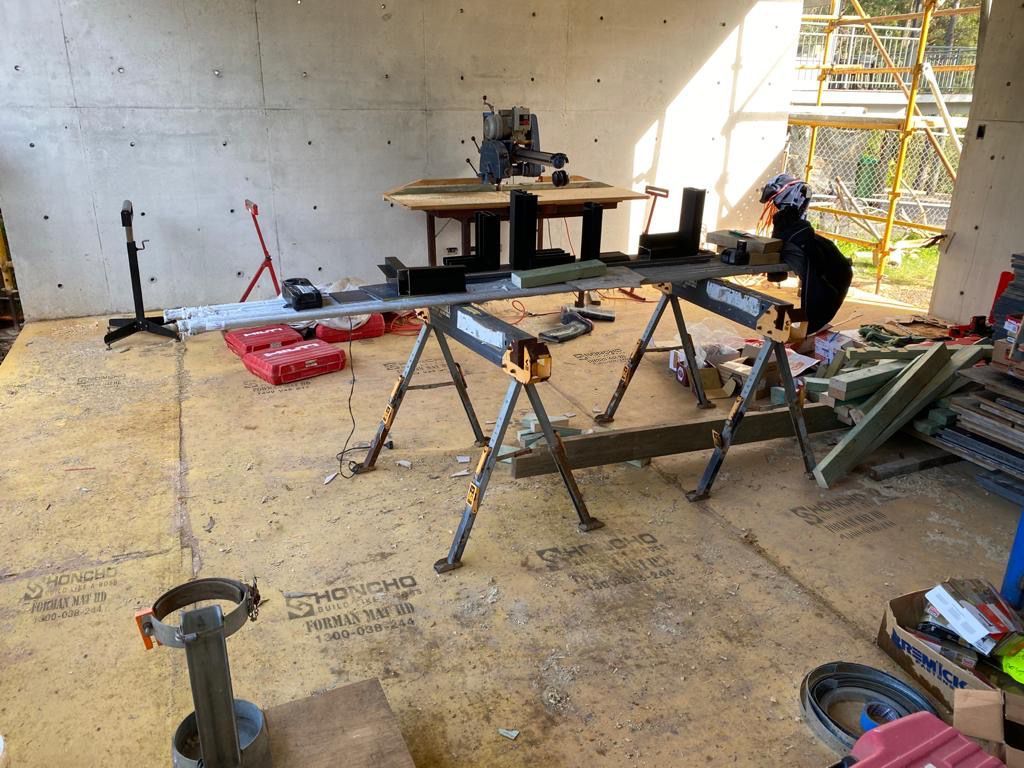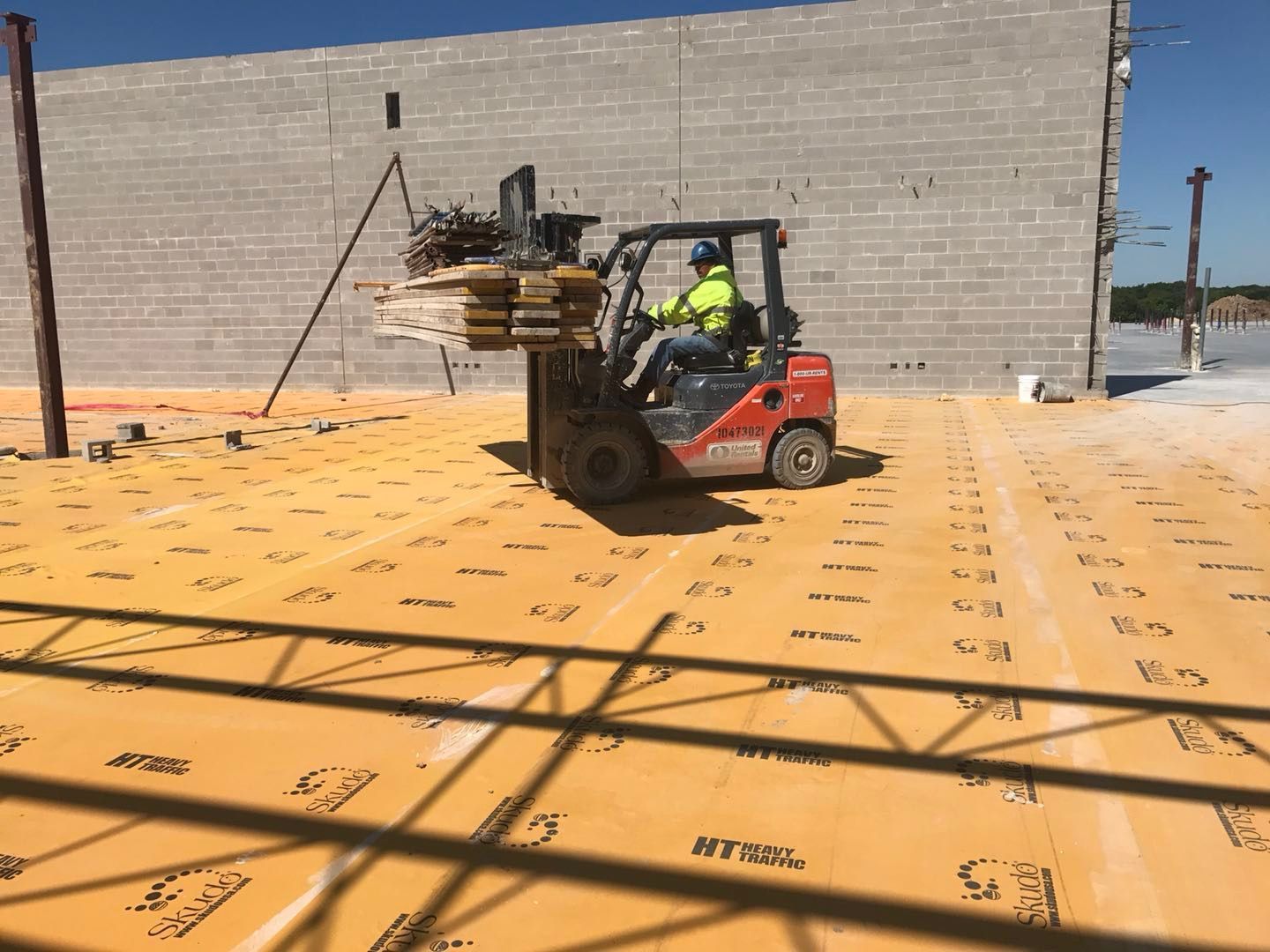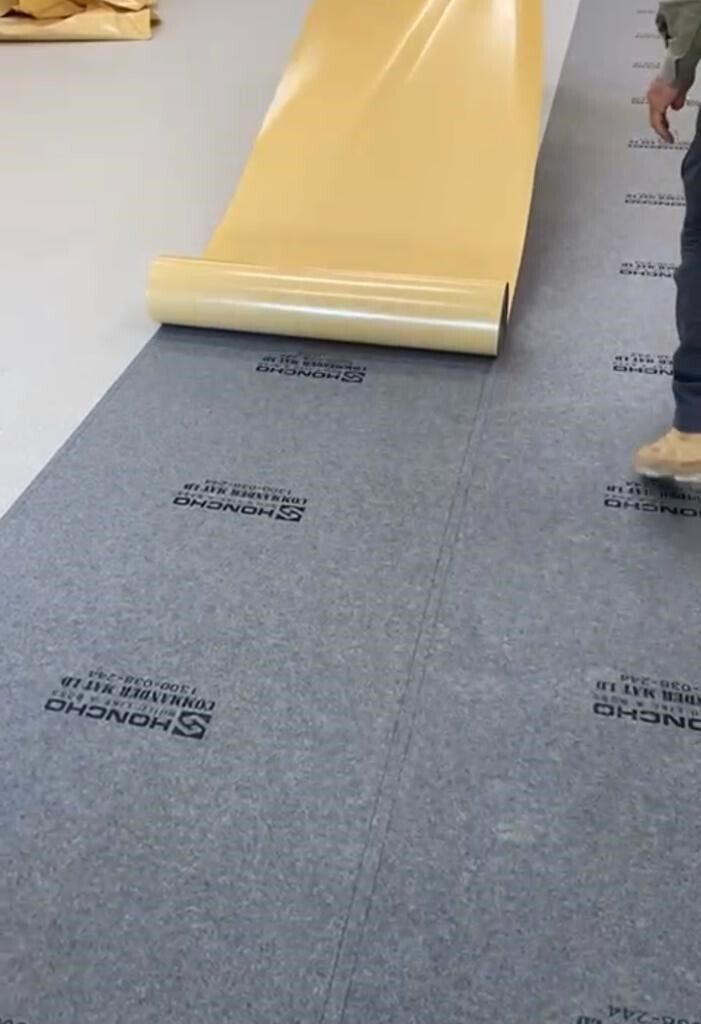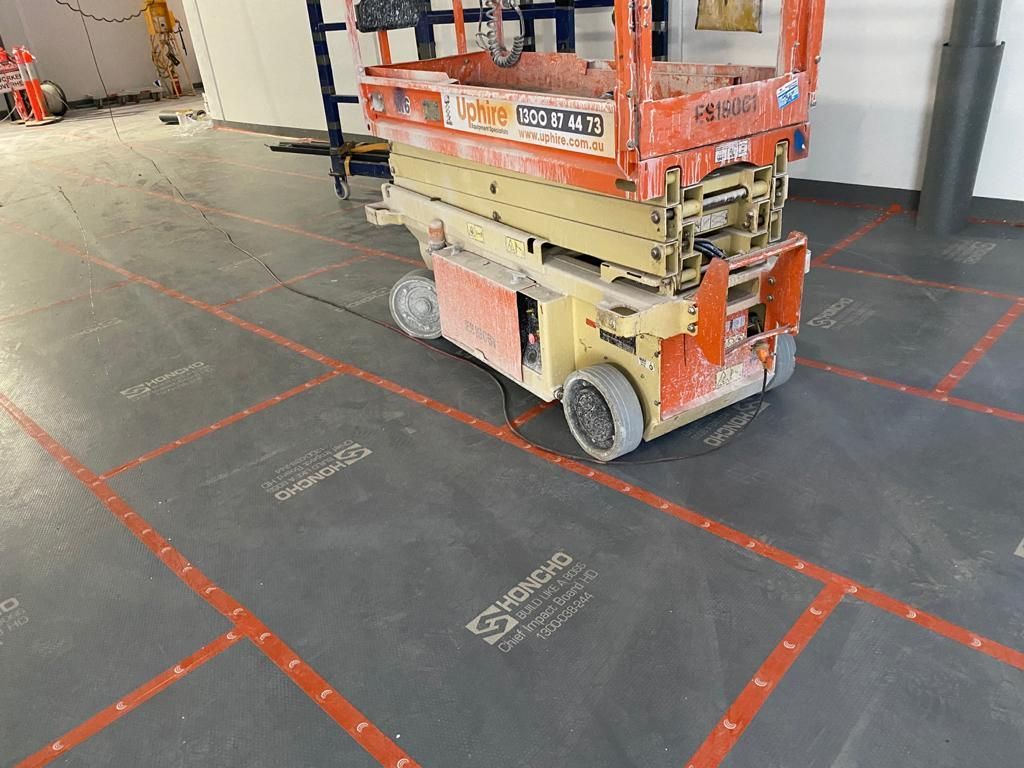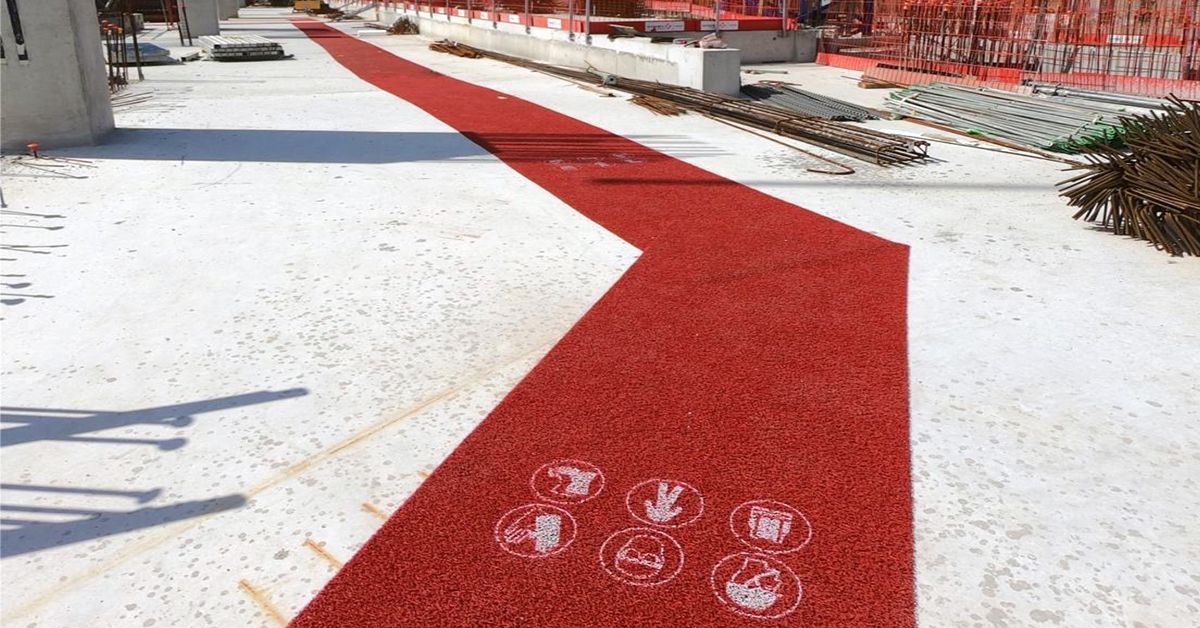Pros and cons of using epoxy floor paint for concrete surfaces
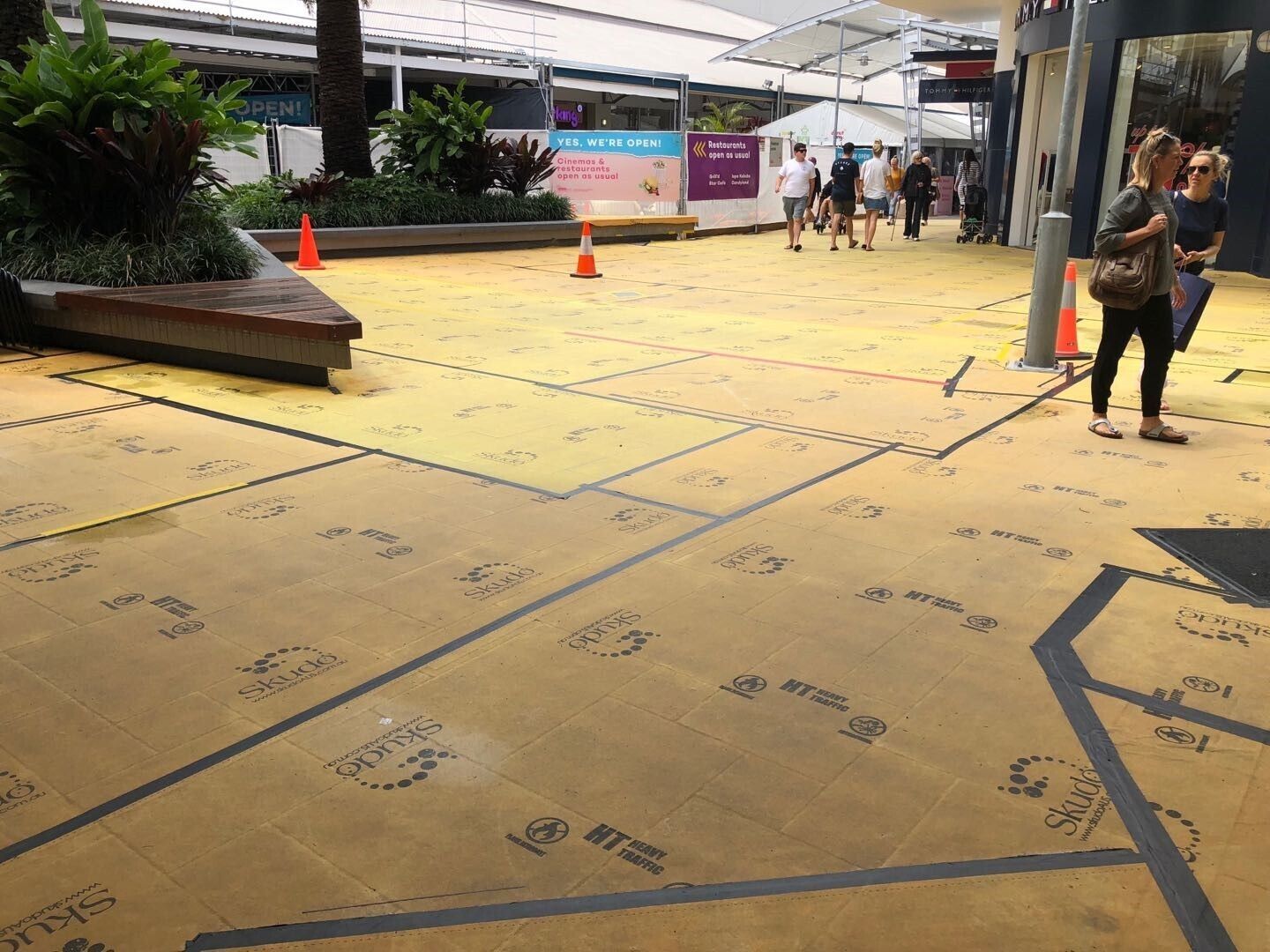
Pros
Enhanced durability and protection
Epoxy concrete floor paint creates a strong and resilient surface that can withstand heavy foot traffic, machinery, and chemical spills – making it an ideal choice for such high-traffic areas as industrial spaces, garages, warehouses, and more. The epoxy coating forms a barrier to protect concrete, preventing surfaces from chipping, cracking, and absorbing stains.
Aesthetic appeal and versatility
Epoxy floor paint comes in a wide range of various colours and finishes, allowing you to customise the appearance of your concrete floors. Its smooth and glossy finish enhances the overall aesthetic of your space, which is what makes it such a popular choice for commercial, residential, and retail locations. Epoxy can also be mixed with aggregates or patterns to add texture and further visual appeal.
Easy maintenance and cleaning
Epoxy-coated concrete surfaces are incredibly easy to clean and maintain, since the seamless and non-porous nature of the material prevents dirt, dust, and stains from penetrating the surface, reducing the effort required for routine cleaning. Regular sweeping and occasional mopping will keep the epoxy-coated floors looking pristine for years to come.
Don’t risk your floors – find epoxy concrete protection from Honcho Supplies and build like a boss today.
Cons
Complex installation process
The installation of epoxy floor paint on concrete requires careful preparation and application. Surface preparation – which includes cleaning and the repair of any cracks or imperfections – is crucial for proper adhesion. DIY installations can be challenging, and it's often best to seek professional help to ensure a successful and long-lasting application.
Susceptibility to UV exposure
Epoxy floor paint is vulnerable to UV rays, especially when exposed to direct sunlight. Over time, heavy UV exposure may cause the epoxy coating to yellowing or discolouration, affecting its aesthetic appeal. To combat this issue, using UV-resistant topcoats or opting for indoor applications can help prolong the life and appearance of epoxy-coated concrete floors.
Potential for cracking
While epoxy is known for its durability, it may develop hairline cracks if the concrete substrate experiences movement or settling. Factors like heavy loads or temperature fluctuations can contribute to this issue. Regular inspections and proper floor reinforcement can help prevent or address cracking, ensuring the longevity of the epoxy coating.
What else should I know about using epoxy protective coating for concrete?
Do you have to prime a concrete floor before epoxy painting the floor?
Yes, priming the concrete floor is crucial before applying epoxy concrete floor paint. Priming ensures better adhesion of the epoxy coating to the concrete surface, enhancing its durability and preventing issues like delamination.
How long does epoxy floor coating last on concrete?
The lifespan of epoxy floor coating on concrete can vary depending on factors like traffic, maintenance, and environmental conditions. With proper installation and maintenance, epoxy coatings can last 5 to 10 years or more in high-traffic areas.
Does epoxy make concrete floors waterproof?
Epoxy floor paint is water-resistant, but not entirely waterproof. While it can repel water and prevent moisture absorption to some extent, it is not suitable for use in areas prone to standing water or flooding.
Do epoxy coatings crack?
Epoxy coatings are generally resistant to cracking, but they can develop small hairline cracks due to substrate movement or settling. Proper floor preparation and reinforcement can minimise this risk.
How can I keep my epoxy floors protected during construction?
During construction and renovation, epoxy flooring is vulnerable to dents, scratches, and damage caused by subpar protection methods, which is why it’s important to use high-strength surface protection products like Chief boards, walkway mats, and construction boards.
Unlike tape or other alternatives, our surface protection products leave no marks behind, ensuring your epoxy concrete floors remain pristine throughout the construction process.


